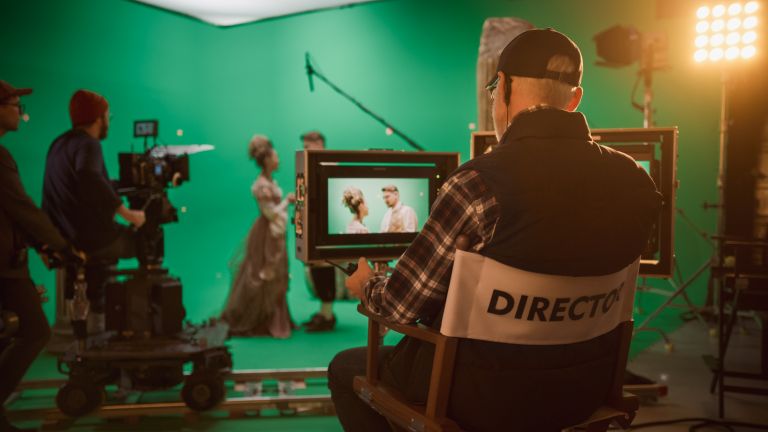The audiovisual sector so male

This year the Golden Globes, the Oscars and most recently the French César awards all failed to nominate any women for best director catalysing campaigns such as #OscarsSoMale and #CesarSoMale. Even the European Parliament’s LUX Audience Award only had one female director nominee out of five film finalists, making it clear that there still are many steps that need to be taken to reach a more equal and diverse film sector, and appreciation for women behind and on the screen.
A report from the European Audiovisual Observatory revealed that women only make up a quarter of all film directors in Europe for the films produced between 2017-21. This underrepresentation is not unique to directors. Only 28% of screenwriters in Europe were women for the same period (EAO). This is clearly demonstrating the disproportionately low representation of female voices sharing stories. Women also don’t have the same assets as men in the sector, they work on fewer films than men, more often in teams and there is a disparity in the access to budgets for the productions (EAO).
Why are there less women in film and TV?
The lack of female representation can be explained by several factors. The inability to have a fair and stable pay makes it difficult to enter the field in the first place. On top of this there is unpredictability in working hours and the struggle of managing a work-life balance. This affects women as more unpaid care work within households is carried out by women (European Parliament) and having children is usually penalising women more than men in the workplace (Le Lab Femmes de Cinéma). Work structures are not created by nor for women in the audiovisual sector. To get a deeper and personal insight on the structures, challenges and experiences that women can have working in the audiovisual sector listen to the interview with SAA’s Patron and Polish film director Katarzyna Klimkiewicz.
Still, it’s worth noting that progress has happened and there is some advancement regarding representation of female professionals as audiovisual authors. The Lab Femmes de Cinéma reported during an event hosted by UNI Europe and more (7 December 2022) that there are several good practices at European level. There has been measures taken to implement policies that support women with children working in cinema, which has given women and men the chance to have equal access to creative spaces (Le Lab Femmes de Cinéma). Such practices create a possibility of a work-life balance instead of forcing women out of the field.
As far as film awards go, the recent campaigns demonstrate there is still a lot of work that must be done to reach equality. Appreciation of films directed by women at award ceremonies have seen some improvements, the European Film Awards is an example of this. Between 2000-2010 there was only one, sometimes no women at all, nominated for best director. Last three years there have been two women nominated for best director per year. Indeed, there has been some positive change with more women’s work being recognized. Another European award that has shown progress in gender equality is the LUX Audience Award. Films directed by women have won 7 out of 15 times, but still more films directed by men are being nominated. So, there is not equal representation, but the ball is rolling and it is essential to not take a step back as we have seen with #CesarSoMale and #OscarsSoMale.
Although we see some improvements within the audiovisual world, gender equality is just one of many goals when aiming for diversity and inclusivity. To create a more diverse and equal audiovisual sector is key. Lack of representation and inequalities based on gender, ethnicity, sexuality, disabilities, social economic diversity and other represented groups are prevalent. So, what changes can be made to create a better and more equal space? Fair and proportional remuneration is a way to create a more secure income for audiovisual authors, so they can invest in new projects and have a more stable career when they can rely on royalties on the exploitation of their previous works. This is a priority for the SAA. Additionally, raising awareness, discussing how to create change, and sharing good practices in Europe is crucial to see further improvements. This is something the SAA is trying to achieve with its members. The SAA is also currently inviting, via its members, new Patrons to enhance the diversity in terms of female authors, younger authors, authors from different genres, non-Western regions and the Baltics countries.
Doing my internship with the SAA made me more aware of the lack of diversity in the audiovisual sector behind and on-camera. I already had some insight on the lack of representation, but with my time at the SAA I have been able to get a deeper understanding of the structural issues and measures being taken to combat the problem. Going forward I will be more attentive to look for films that promote diversity and make a more conscious effort of seeking out films that have a diverse representation on-and behind the screen.
Oda Marie Steensen, intern at the SAA
